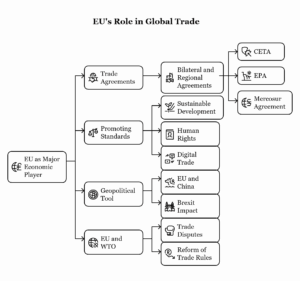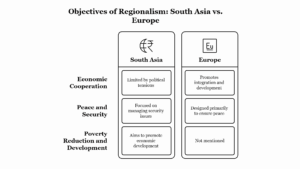The Canadian Parliament is a cornerstone of the country’s democratic system, operating under a parliamentary form of government. It is the supreme legislative body in Canada, responsible for enacting laws, representing the electorate, and overseeing the activities of the government. The functions of the Canadian Parliament can be categorized into several key areas, each contributing to the effective functioning of the country’s democratic governance.
1. Legislative Function:
The most prominent function of the Canadian Parliament is its legislative role. Parliament is responsible for drafting, debating, amending, and passing laws. This process involves several stages:
- Introduction of Bills: Legislation is usually introduced in either the House of Commons or the Senate. Bills can be introduced by the government or private members (individual MPs or Senators).
- Debate and Examination: After a bill is introduced, it undergoes detailed examination by committees, where it is scrutinized by members of Parliament. MPs debate the bill’s merits, suggest amendments, and vote on whether the bill should proceed.
- Passage of Bills: Once a bill passes through both houses of Parliament (House of Commons and Senate) and is given Royal Assent by the Governor General, it becomes law. The House of Commons is the primary chamber where legislation is debated, while the Senate acts as a revising chamber, offering suggestions and amendments.
This process ensures that the creation of laws is open to public discussion, review, and scrutiny, which is fundamental to Canada’s democratic principles.
2. Representation Function:
Another important function of the Canadian Parliament is to represent the people of Canada. Members of the House of Commons (MPs) represent the interests of their constituents, who are citizens from specific geographical areas (ridings). Each MP is elected to represent their community’s interests in the federal government.
MPs participate in debates, raise issues pertinent to their constituents, and vote on legislation that could affect the daily lives of Canadians. They are also responsible for holding the government accountable for its policies and actions. The Senate, on the other hand, provides regional representation, ensuring that the interests of smaller provinces are not overlooked in the legislative process.
The diversity of Canada’s population, in terms of regions, cultures, and languages, is reflected in the membership of Parliament, allowing for a broad range of voices and perspectives in the decision-making process. This system ensures that no single region or group has disproportionate influence over national policies.
3. Scrutinizing the Executive (Oversight Function):
One of the most important functions of the Canadian Parliament is its ability to scrutinize the actions and decisions of the executive branch of government, which is led by the Prime Minister and the Cabinet. This oversight function is essential for maintaining the principle of responsible government, where the executive is accountable to Parliament.
- Question Period: The daily Question Period in the House of Commons is a key mechanism for holding the government accountable. MPs can ask the Prime Minister and other Cabinet ministers questions on policies, programs, or any government action. This helps to ensure that the executive does not act without scrutiny and operates transparently.
- Committees: Parliamentary committees play an essential role in examining the government’s actions. These committees are made up of MPs and Senators, and they investigate specific areas of public policy, conduct inquiries, and review the administration of government programs. They also provide recommendations to improve government functioning.
- Votes of Confidence and Non-Confidence: The House of Commons can express confidence or lack of confidence in the government through formal votes. If the government loses a vote of confidence, it is usually forced to resign, and a new government must be formed. This ensures that the executive branch remains responsive to the will of the people as expressed through their elected representatives.
4. Amendment of the Constitution:
Parliament plays a role in amending the Constitution of Canada. While constitutional amendments typically require the consent of both the federal and provincial governments, Parliament’s participation is crucial. Most constitutional amendments require approval from both Houses of Parliament, with the Senate serving as a revising body that examines proposed changes. Notably, the Constitution Act, 1982 included provisions for the patriation of Canada’s constitution and the addition of the Canadian Charter of Rights and Freedoms, which guaranteed fundamental rights and freedoms to all Canadians.
This role underscores Parliament’s involvement in the evolving political framework of Canada, ensuring that the Constitution can adapt to contemporary issues and needs.
5. Approval of Public Spending (Financial Function):
Canadian Parliament holds significant powers in overseeing public spending and taxation. Under the Constitution Act, 1867, only the federal government (through Parliament) has the authority to impose taxes and approve national expenditures. The Minister of Finance presents the federal budget to Parliament, detailing how public funds will be allocated for various governmental programs.
Parliament debates and votes on the budget, ensuring that the allocation of resources aligns with national priorities. This power of the purse is critical for ensuring that the executive does not misuse taxpayer funds and that public resources are used effectively and responsibly. Parliamentary oversight also extends to the scrutiny of government spending in relation to departmental expenditures, ensuring accountability and transparency.
6. Advisory Role to the Governor General:
The Canadian Parliament plays an important role in advising the Governor General, who represents the Queen in Canada. Though the Governor General’s role is largely ceremonial, Parliament ensures that the democratic will of the people is reflected in the Governor General’s actions.
For instance, while the Governor General has the formal power to dissolve Parliament and call elections, this is done in accordance with the advice of the Prime Minister, who is responsible to Parliament. The Governor General’s powers are exercised in accordance with the advice and decisions made by Parliament, which ensures the democratic process remains intact.
Conclusion:
In summary, the functions of the Canadian Parliament are integral to the proper functioning of Canada’s democracy. Through its legislative role, representation of the people, scrutiny of the executive, constitutional amendments, oversight of public spending, and advisory role to the Governor General, Parliament ensures that government actions reflect the will and needs of the Canadian people. The checks and balances established by Parliament ensure a system of governance that promotes transparency, accountability, and responsiveness to public concerns.







Leave a Reply